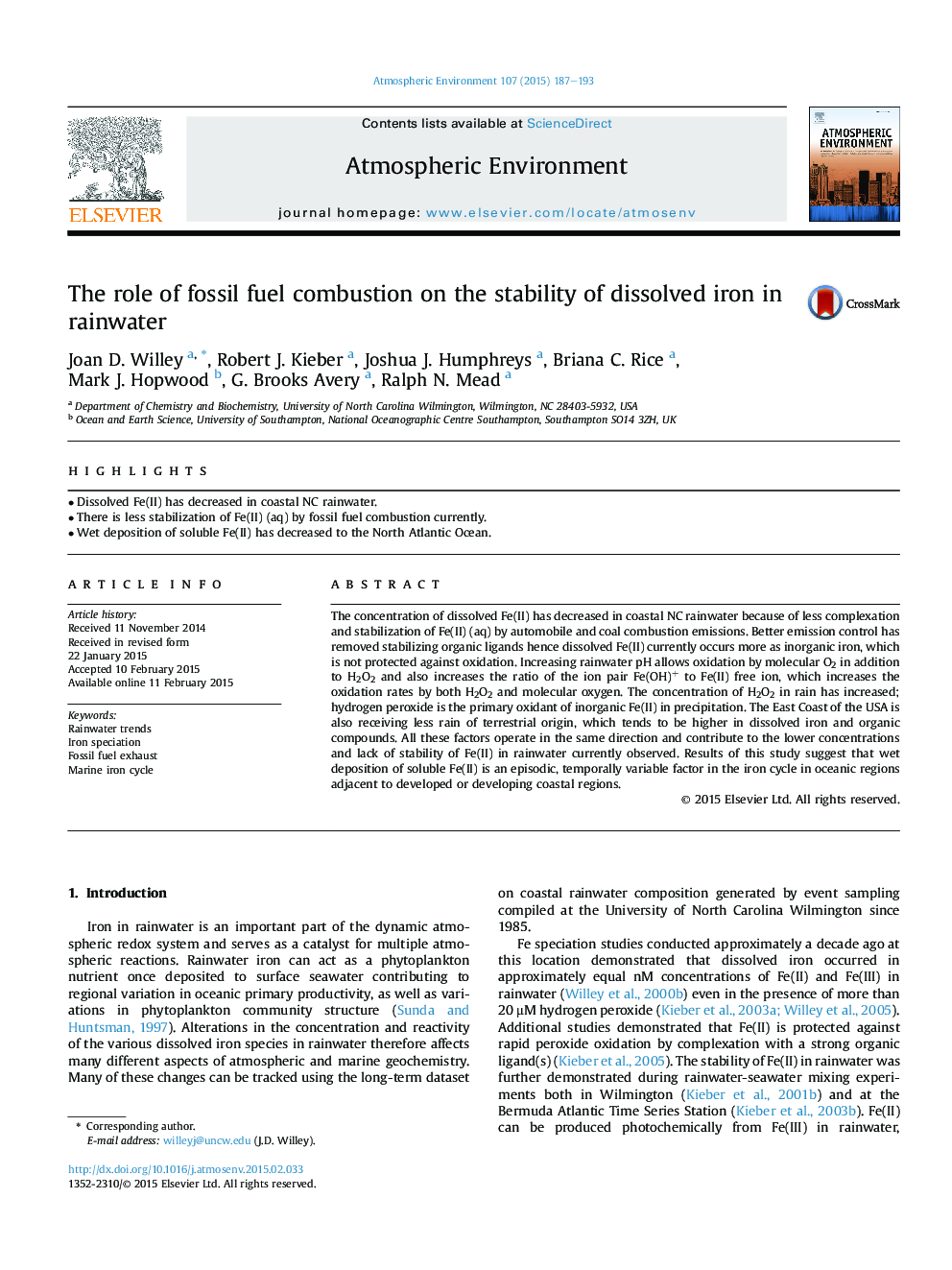| Article ID | Journal | Published Year | Pages | File Type |
|---|---|---|---|---|
| 6338421 | Atmospheric Environment | 2015 | 7 Pages |
Abstract
The concentration of dissolved Fe(II) has decreased in coastal NC rainwater because of less complexation and stabilization of Fe(II) (aq) by automobile and coal combustion emissions. Better emission control has removed stabilizing organic ligands hence dissolved Fe(II) currently occurs more as inorganic iron, which is not protected against oxidation. Increasing rainwater pH allows oxidation by molecular O2 in addition to H2O2 and also increases the ratio of the ion pair Fe(OH)+ to Fe(II) free ion, which increases the oxidation rates by both H2O2 and molecular oxygen. The concentration of H2O2 in rain has increased; hydrogen peroxide is the primary oxidant of inorganic Fe(II) in precipitation. The East Coast of the USA is also receiving less rain of terrestrial origin, which tends to be higher in dissolved iron and organic compounds. All these factors operate in the same direction and contribute to the lower concentrations and lack of stability of Fe(II) in rainwater currently observed. Results of this study suggest that wet deposition of soluble Fe(II) is an episodic, temporally variable factor in the iron cycle in oceanic regions adjacent to developed or developing coastal regions.
Keywords
Related Topics
Physical Sciences and Engineering
Earth and Planetary Sciences
Atmospheric Science
Authors
Joan D. Willey, Robert J. Kieber, Joshua J. Humphreys, Briana C. Rice, Mark J. Hopwood, G. Brooks Avery, Ralph N. Mead,
